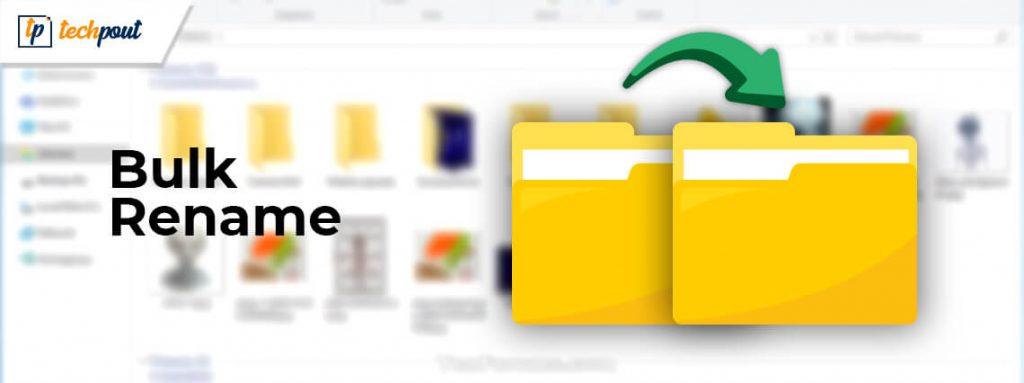

Regsvr32 /u "C:\Program Files\Bulk Rename Utility\BRUHere. You can remove the helper in a similar way:

Regsvr32 "C:\Program Files\Bulk Rename Utility\BRUHere.dll" Assuming you installed Bulk Rename Utility into C:\Program Files\Bulk Rename Utility then you need to get a command line (Start, Run, cmd) and enter the following: If you wish to enable or disable the Bulk Rename Here helper manually, it's easy to do. The note regarding Favourites above also applies here. Open File Explorer using the Windows 11 keyboard shortcut ‘Win+E’ and select the files you wish to rename. C:\) without realising that a recursive directory search is about to be performed. This is to prevent situations where you choose a high-level folder (e.g. If you are using the Favourites facility, and you have selected the option to automatically save Favourites upon exit, then please be aware that the folder name stored against the favourite will become the folder you right-clicked.įor reasons of performance, if you use the Bulk Rename Here right-click function then the Sub-folders flag will be unticked, regardless of its stored setting. PowerRename window After selecting files in Windows File Explorer, right-clicking and selecting PowerRename (which will appear only when enabled in PowerToys), the PowerRename window will appear.

Notice that the Explorer's 'Undo Rename' (Ctrl+Z) command enables the ability to undo the last change. This provides quick access to the utility. PowerRename enables a single bulk rename. Selecting this option will launch Bulk Rename Utility, and will automatically select the folder you right-clicked (or the parent folder, if you right-clicked a file). If you choose this option (recommended), you will find a new Bulk Rename Here facility when you right-click a file or folder within Windows Explorer. When you install Bulk Rename Utility you have the option of installing "Context" menus.


 0 kommentar(er)
0 kommentar(er)
